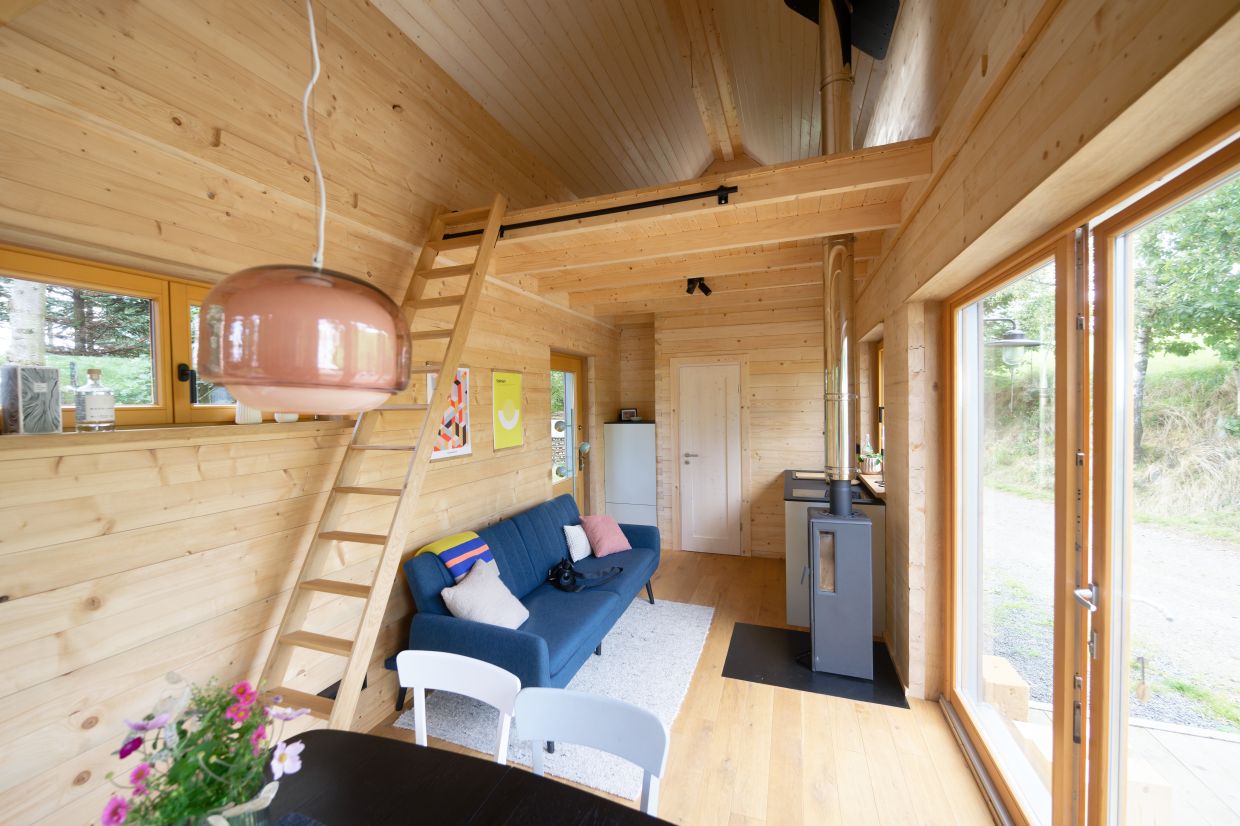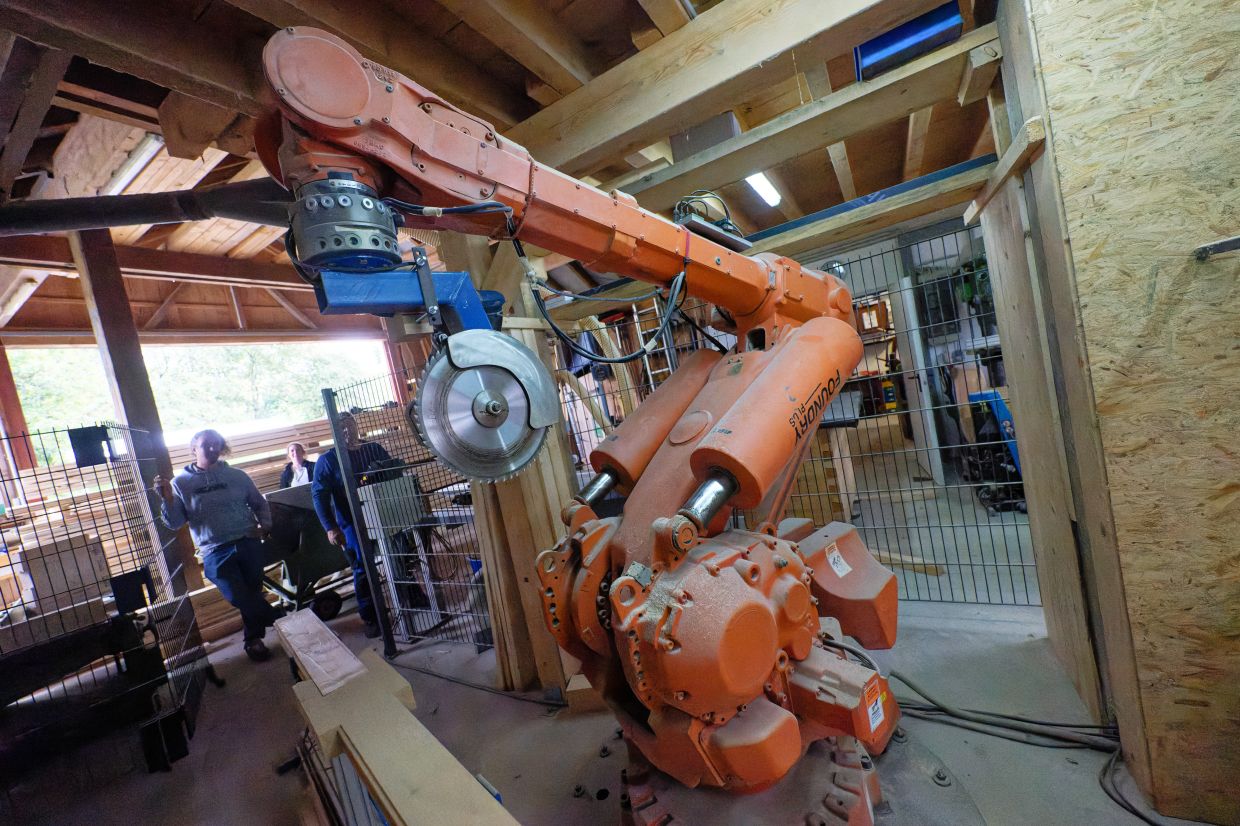Siblings Lisa (left) and Timo in front of a sample of their 'Organic Tiny House'. Photos: Henning Kaiser/dpa
Bare, bleak areas wherever you look. Where everything was green just a few years ago, drought and bark beetles have destroyed large areas of forest.In Germany's Sauerland region east of Dusseldorf, "70% of our trees were spruce and we lost them completely within two years", explains Timo Gelzhauser.
Together with the University of Dortmund and funded by the state of North Rhine Westphalia, they recently developed a prototype. With good timing: just as in many other countries, the tiny houses are currently attracting growing interest in Germany.
The demand for XS houses, especially as owner-occupied homes, is high, says Regina Schleyer from the Tiny House Association. The reasons include: "Conventional building is becoming more and more expensive, rents are rising and energy prices are climbing."
The association currently estimates that there are more than 100 providers of the small dwellings nationwide. Environmental aspects, resource conservation and sustainability are also important to many tiny house fans, like the forest-owning siblings from Kierspe.
"We only use dead, i.e. salvaged wood," emphasises Lisa, who is 35. Bark beetles always remain under the tree bark and do not eat into the wood, which can therefore be used without any problems, explains her brother Timo, 39.
"No glue, no chemicals."
An air source heat pump is standard, the wooden house is well insulated and covered with recyclable titanium zinc sheeting or natural slate.
For manufacturing, the siblings have invested in a small sawmill on the family farm. Here they cut, machine-dry and plane the wood. A second-hand robot from the car industry cuts the planks at the corners so that they can be put together later. The individual materials of the Tiny House – manufactured without nails – can also be recycled later if necessary, according to a closed-loop principle.
The house can also be loaded with a crane and moved to another location if required. It stands on screw foundations a few centimetres above the ground so that water can seep away. There is no surface sealing.
According to the German Association of Towns and Municipalities (DStGB), the often mobile tiny homes can also be used temporarily on fallow land or residual areas and gaps between buildings that cannot otherwise be built on. This feature has become increasingly important and the little houses can be found in more and more cities and municipalities.
In view of the housing shortage and shrinking households, "tiny houses can certainly be an alternative for cities and municipalities", says Alexander Kramer, a director at the DStGB. Some local authorities are also relying on XS houses to accommodate refugees.
Schleyer from the Tiny House Association knows: "A lot is happening. More and more local authorities are opening up and seeing opportunities."
Demand is often coming from young couples, including those with children, who want to live a minimalist lifestyle.
But the 50-plus age group is also well represented. The features and prices of the minis vary greatly, and small houses on wheels are popular.
"To stay flexible in case you want to move.
Tiny House sales figures are not recorded.
Gelzhauser explains that they are contacted by people who have been dreaming of a wooden house for a long time or who want to reduce their ecological footprint. Modules form the basis. The simplest offers just under 20sq m of living space and has a flat roof, costing a good €75,000 (RM383,563). Many sizes, variants, extensions and roof shapes are possible.
Incidentally, if a Tiny House is used for permanent living, it is considered a building in Germany. A building permit is then required and all current building regulations must be observed.
"For every house we sell, we plant new trees and invest in biodiverse mixed forests with hopefully climate-resistant tree species," says Lisa.
Their efforts have earned them the German Forest Award 2023 as "Forest Owner of the Year".
"There is so much wood, but no plan for it other than to export it."
The two had first thought about selling the wood to China but changed course. Their spruce trees will last for another two years of micro-home production. After that, they will buy dead trees from neighbouring forest farmers.
The siblings hope that their example will be copied, because "the devastating damage caused by climate change is a problem of the century and affects many forest farmers in the country". – dpa












